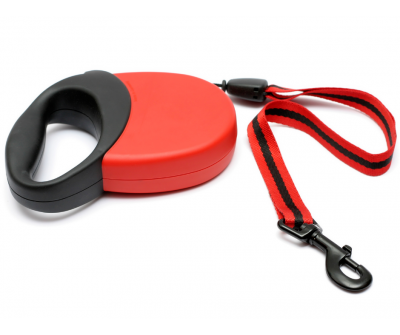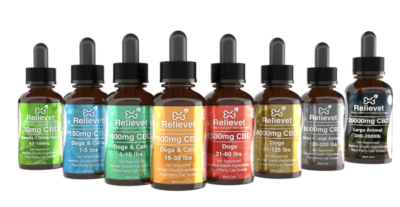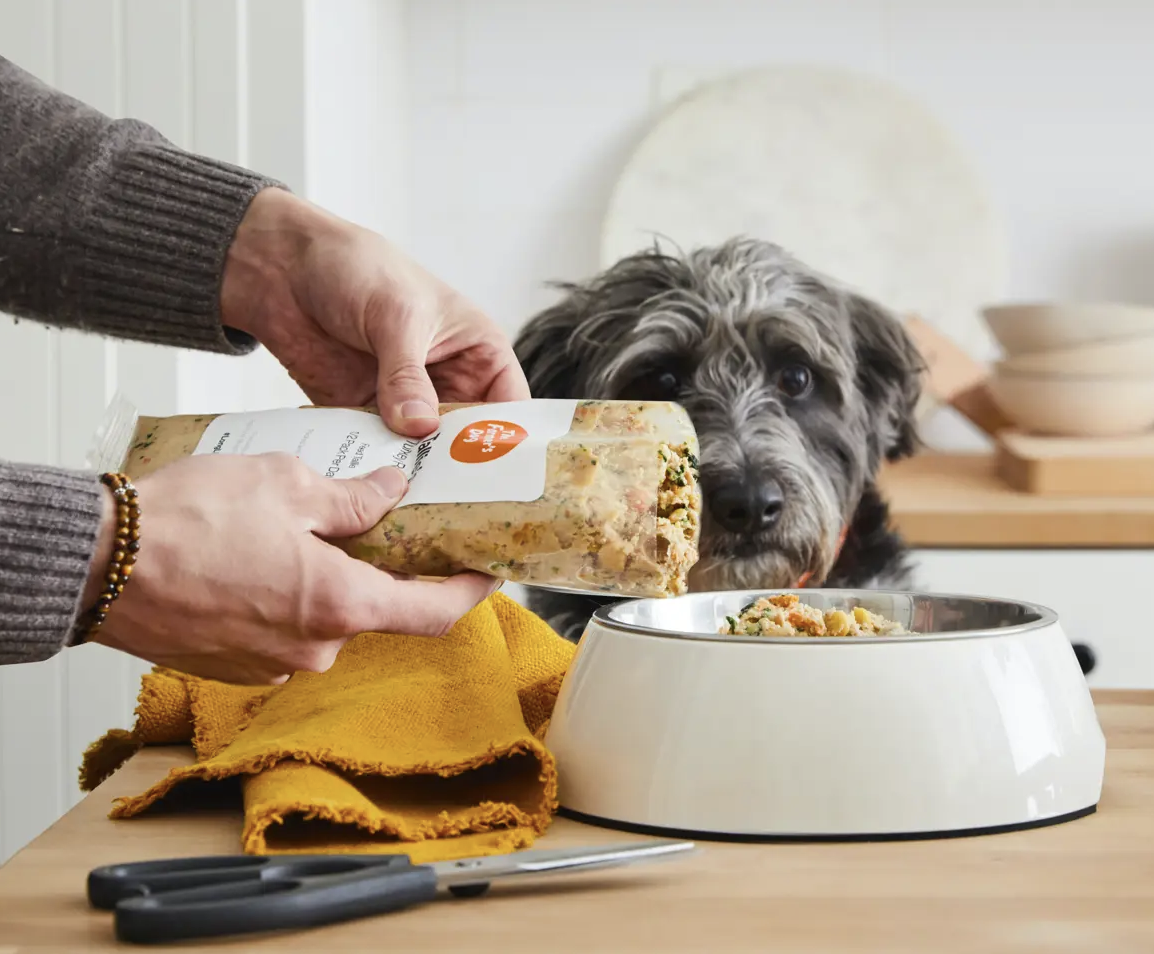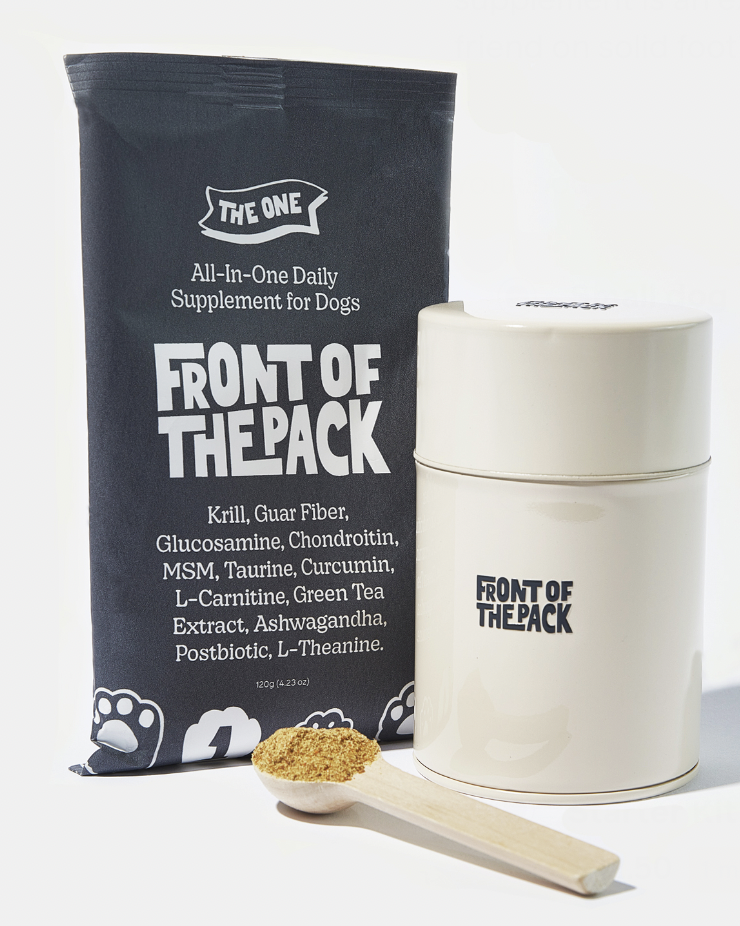THIS Solved My Dog’s Itchy Paw Problem
I have a little terrier mix named Cookie, who was constantly licking her paws until they were raw, red and hairless. We tried everything to alleviate my dog’s itchy paws.
When a dog is constantly biting or licking, it’s usually NOT a case of self-grooming, and could instead be a sign of an underlying condition, like allergies. The heartbreaking thing is that my poor dog was consumed with licking her paws. It seemed like she didn’t do anything else.
Here, I’m sharing an in-depth guide as to why your dog might be licking their paws, how to detect the symptoms, and a few tips and tricks to treat your dog’s itchy paws. Also, I’ll tell you what eventually just about solved Cookie’s itchy paw issue.

How To Help Your Dog’s Itchy Paws
We never want to see our pups in pain or discomfort. Thankfully, there are plenty of ways to protect your dog’s paws from allergies and other irritants.
1. Wipe Your Dog’s Paws


Right after going on a walk with your dog, get into the habit of washing or wiping your dog’s paws thoroughly. This tip may prevent your dog from having seasonal allergies. I like these medicated paws that are anti-fungal, anti-bacterial, and anti-microbial so you’re covering your basis.
2. Soak Your Dog’s Paws / Herbal Foot Bath
The ultimate soothing method, soaking your dog’s paws in a special paw bath, should relieve some of the paw itching and reduce inflammation.
I recommend the following types of baths for dog paws:
- Warm water bath: When in doubt, soak your dog’s paws in warm water to rid them of allergens or irritants. Combining warm water with certain properties, such as hydrogen peroxide, offers benefits for different types of infections as well. A fantastic, non-toxic DIY mix for a dog’s bath is a combination of warm water and iodine.


- Healing herbal tea bath: Putting herbal teas in a warm bath can heal your dog’s open wounds or inflammation. Just be sure to use all-natural teas for steeping. Take a couple tea bags, put them in a small bucket big enough for your dog can stand in but not be submerged in, and add piping hot water to extract all of the healing properties of the tea. Wait until the water is warm but not hot and then put your dog in. I realize that’s easier said than done. But try to keep your dog in there as long as possible. I recommend using chamomile or sage tea.
- Epsom salt bath: Dissolving Epsom salt in warm water can help remove any bacterial infection from your dog’s paws. Soak your dog’s paws in the mixture for about ten minutes for effective result.
- Baking soda bath: Pouring a tablespoon or two of baking soda in warm water should diminish itching and inflammation on your dog. Allow your dog’s paws to soak for a few minutes for maximum relief.
- Oatmeal bath: When a pup has sensitive skin, oatmeal is a great natural alternative to consider. Using unflavored oats, you can give your dog a warm water bath in oatmeal. Have your dog’s paws soak for ten minutes for ultimate moisturization and relief. Again we realize easier said than done but if you have a tolerant dog this will work wonders.
See also Try ‘Shampoo Therapy’ to help your dog’s itchy skin
3. Make a Homemade Anti-Itch Spray
If you’re in a pinch, try to make homemade dog anti-itch spray! Made from ingredients you probably already have lying around the house, this simple all-natural solution can be whipped up in just a few minutes.
Ingredients:
- 2 camomile tea bags
- ½ cup boiling water
- ½ cup apple cider vinegar
- 1 cup cold water
- 1 spray bottle with a fine mist
Instructions:
- Add your camomile tea to a mug and cover it with ½ cup of boiling water. Allow the tea to steep for 2-5 minutes.
- Remove the tea bags and pour the tea into your spray bottle.
- Add the apple cider vinegar and cold water and mix or swirl to combine.
- Use immediately if cool enough, or place in the refrigerator until cooled.
- Store in the refrigerator for freshness.
4. Trim Your Dog’s Nails Regularly
Maintaining your dog’s cleanliness is essential for health and hygiene, but it can also reduce pain and discomfort due to allergies or irritants. For instance, keep your dog’s grooming in check by trimming their nails to prevent toenail injuries in the future.
5. Use Protective Gear

While this suggestion is especially relevant toward dog owners who live in colder climates, ensure that your dog is wearing booties, paw wax, or other protective clothing before going for walks in the snow or on salt. Extreme cold weather, particularly snow, may make your dog’s paws red and itchy. Ensure that your dog’s paws have maximum protection this winter.
6. Replace the Leash, If Necessary

If your dog is licking their paws every time you go on a walk, it may be that retractable leash you’re using. Tight leashes on a collar can already cause blisters and itchy, red skin around a dog’s neck, but retractable leashes may contribute to inflammation and spasms. If you’re using a retractable leash and notice your dog is licking their paws incessantly, make the switch to a traditional leash immediately.
7. Moisturize Your Dog’s Paws

Environmental allergies or other skin irritants wreak havoc on a dog’s paws, causing dryness, flaking, and itching. Luckily, there are plenty of organic paw salves or balm moisturizers for dogs on the market. Moisturize your dog’s paws often with a specialized moisturizing cream that targets skin irritation. We like this one that has CBD for extra relief.
8. CBD and Anti Anxiety Elixirs

CBD oils for dogs are on the rise and proving to be helpful for dogs with allergies and flare-ups. The other benefit is they help calm your dog if they’re in a licking frenzy and you’re trying to calm them. I have personally used Innovative Extract’s beef flavored CBD (pictured above) for my dogs and have had very good results. I love that they grow on a farm in Pennsylvania and are Veteran owned. In my experience not all CBD oils are created equally. It’s definitely a buyer beware product.
See also All-natural remedies to soothe your dog’s itchy skin
9. Try Cytopoint
My dog finally found relief with Cytopoint. It’s perfect for dogs that are inherently itchy dogs, like terriers. It’s specifically designed to target and neutralize one of the main proteins that send itch signals to your dog’s brain that triggers scratching, licking, and chewing. It’s not a chemical, rather a protein.
This solution is certainly not appropriate for all dogs and requires vet visits and injections every 2-3 months. After the initial consultation usually a vet tech can handle the follow up appointments.
After visiting a few vets with no solutions I finally found one who thought Cookie would be good candidate for Cytopoint. It was like a miracle for my dog’s itchy paws. Her paw licking was reduced immediately ( the same day). Overtime the shots become a little less effective than they were initially were, so in between time I use CBD and paw wipes on a regular basis.
What is Cytopoint?
Cytopoint is a medicine for dogs that helps relieve itching and inflammation caused by allergies. It contains a special ingredient called lokivetmab that targets the protein responsible for allergic reactions.
Cytopoint helps to reduce itching by blocking the signals that cause allergic reactions, providing relief for dogs suffering from itchy skin.
Why Might a Dog Have Itchy Paws?
There could be several reasons why your dog has itchy paws, including:
1. Breed
Some dog breeds are itchier than others. Terriers are known for being the itchiest, including Westies, Scottish Terriers, Cairn Terriers among others.
Not sure what breed your dog is? Get a DNA test for your dog. It’s painless and sort of fun to find out the results. Embark is one of the best known DNA test for dogs.

OR Save up to $60 with code EMBARK
2. Inflammation
Inflammation, or hot spots, appear when your dog has patches of red, itchy skin. If your pup is licking the same area repeatedly, it is likely a case of extreme itchiness due to hot spots.
3. Yeast
Yeast gives a greasy appearance to a dog’s skin and hair. It is also a form of infection that can cause extra itchiness and odor.
4. Dandruff
Yes, dandruff can appear in a dog’s fur, too. Depending on the dryness of a dog’s skin, dandruff may form, causing a dog to itch the dry patches incessantly.
5. Ringworm
As a fungal infection, ringworm is contagious among many animals, including dogs. Ringworm can also appear on a dog’s paws.
6. Ticks or Fleas
When certain parasites lodge themselves in dog paws, your dog may start to lick the affected area repeatedly. Dogs may take flea and tick medication to prevent discomfort.
See also Just brushing your dog’s coat can help alleviate itchy skin
7. Mites
Demodex mites and scabies mites invade the skin’s surface. If your dog has scabs, hair loss, inflammation, and constant itchiness, there may be mites on the skin.
8. Cold Climates
If you’re a dog owner who lives in a cold climate, snow and de-icers may be the causes of your dog’s skin irritation. If your dog is walking on snow without booties or paw wax, their paws may become red, irritated, and itchy.
9. Toenail Injuries
A dog that is suffering from a toenail injury may explain the itchy paws. Partially torn-off nails and overgrown nails cause extreme discomfort in dogs, hence the swollen paws and excessive licking. Trim your dog’s nails regularly. If they are curled over you know it’s time to do it asap!
1o. Lodged Objects
When small objects, such as pebbles, become wedged inside a dog’s paw, it can cause pain and discomfort. Note that your dog may continue to lick their paw for a while, even after you remove the object.
11. Burns or Blisters
If you notice red or cracked skin on your dog’s paws, they may suffer from burns or blisters. Try to avoid walking your dog on hot pavement or using certain household cleaning items to prevent burns.
12. Joint Pain
Following a surgical procedure, your dog may try to lick their paws because the area will be swollen and bothersome. And if your dog is struggling with joint pain, torn ligaments, or otherwise, they will experience some discomfort, which can lead to paw licking.
13. Anxiety
Your dog may be licking their paws frequently because they are experiencing general anxiety or boredom. Paw licking is a common coping mechanism for dogs, but can certainly lead to inflammation over time.
14. General Bacterial Infection
When a dog suffers from any kind of bacterial infection, it can lead to scabbing, redness, and itchy paws. To ensure that your dog recovers from any bacteria on the skin, prioritize wiping their paws daily or using a medicated dog shampoo.
15. General Dog Paw Allergies
Be aware of common allergies that many dogs encounter, such as environmental allergies, food allergies, or other skin irritants. Redness or dark staining on your dog’s paws may be signs of excessive licking and an allergic reaction.
Ultimately, most dogs that constantly lick or chew their paws have certain allergies that make them itchy.
16. Frontline Plus Burning Dogs Skin
Unfortunately, one of the common side effects of popular topical flea and tick medications like Frontline is burned and irritated skin. Reactions can vary from mild to severe and can be quite painful. If your dog has received Frontline treatment and starts to itch, contact your vet immediately.
Ask your vet about safer alternatives to Frontline at your next checkup! Veterinarians offer a variety of flea and tick prevention treatments including oral medications.
17. Abrasions & Injuries
If you notice your dog licking their paws after beach visits, they could be suffering from small abrasions or injuries. The sand can hide little pieces of glass and metal, which can easily cut your pup’s feet. Running around in the sand can further irritate these abrasions, which can make your dog lick their paws to soothe the discomfort.
Be very careful bringing your dog to beaches with soft, deep sand. Keep an eye out for trash and litter, and do your best to only visit beaches where glass is prohibited. Many cities also have designated dog beaches that are meticulously cleaned to keep your dog safe.
18. Worms
No, a dog licking their paws probably isn’t showing signs of having worms. However, other kinds of itching can be an indicator of parasites. If you notice your dog biting the base of its tail but no fleas are visible, it could be a sign they are suffering from internal issues.
Reach out to your vet, who will likely instruct you to bring in a stool sample and set up an appointment for your pooch.
20. Diet
If your dog is allergic to their food it could cause itchy paws. Here are some foods that will help
The three foods that are super healthy and that almost every dog loves, even the pickiest dogs, are:
1. The Farmer’s Dog.
This is a fresh-frozen food that’s delivered to your home in just the right amounts for your dog. There are a number of fresh frozen dog foods available on the market and I tested them all. The Farmer’s Dog came up the winner with my picky dogs. You can see the fresh frozen food test here.
Save 60% on your first order
—
2. Sundays Food For Dogs
This is an air-dried food. It has the convenience of kibble (just pour it in the bow) but is much much healthier. It’s like little pieces of jerky, so dogs go crazy for it. There are a number of air-dried foods on the market. My dogs tested 3 of them. You can see the results of the air-dried food test here.
Get 35% off your first order + free shipping w/ code ROCKY35
3. We Feed Raw.
This raw food for dogs comes delivered to your home is perfectly sized portions for your pup. They primarily source their ingredients from trusted U.S. farmers, with two exceptions: venison and lamb. These ingredients are sourced from New Zealand, where some of the highest-quality and most ethically raised venison and lamb can be found. Pasture-raised and grass-fed and finished, we highly recommend trying these formulas if you’re interested in the best-quality ingredients. Save 25% on your first order.
Supplements:
I highly recommend using a supplement on your dog’s food, not matter what you feed them, to ensure the meal is balanced and they are getting all the right supplements to help them stay healthy. The supplement I use is called The One from Front of the Pack. It has 12 ingredients that have been clinically-proven to keep your dog’s joints, skin, heart, digestion, and even their breath in tip-top shape. It’s also a powder, so easy to sprinkle on your dog’s food. For a limited time, when you buy one month you get a second month free.
FAQ
Why does my dog have itchy paws?
Itchy paws in dogs can be caused by various factors such as allergies, irritants, yeast infections, or even dry skin.
How can I tell if my dog has a yeast infection in their paw pads?
Look for signs like redness, swelling, odor, or discharge between the toes or on the paw pads. If you suspect a yeast infection, consult your veterinarian for a proper diagnosis.
What are some home remedies for itchy paws in dogs?
Natural remedies for dog itchy paws include oatmeal baths, coconut oil, apple cider vinegar rinses, or chamomile tea soaks. However, it’s important to consult with your vet before trying any home remedies.
Can I use over-the-counter creams or ointments to treat my dog’s itchy paws?
It’s generally not recommended to use human creams or ointments on your dog’s paws without veterinary guidance, as some ingredients can be toxic to dogs. Always consult with your vet for appropriate treatments.
How can I prevent my dog’s paws from getting itchy?
Regularly clean and inspect your dog’s paws, keep them dry, avoid walking on hot surfaces, and use paw protectants like balms or booties when necessary. Additionally, addressing any underlying allergies can help prevent itchy paws.
What can I give my dog for itchy paws?
Depending on the cause, your vet may recommend antihistamines, omega-3 fatty acid supplements, or prescription medications such as corticosteroids or cyclosporine. However, it’s crucial to consult your vet before administering any medication.
How can I soothe my dog’s red and itchy paw pads?
Soothing your dog’s red and itchy paw pads can be done by gently washing them with a mild, pet-friendly cleanser, applying a veterinarian-recommended paw pad balm, and providing a comfortable resting area to avoid further irritation.
What are the potential side effects of using medications like Cytopoint for itchy paws?
While Cytopoint is generally safe, some dogs may experience mild side effects like vomiting, diarrhea, or lethargy. It’s essential to discuss potential side effects and monitor your dog closely when using any medication.
Is there a specific diet that can help with my dog’s itchy paws?
yes, we have a list of them above. Just scroll up!
Conclusion
Not every dog will respond to the same solution… but if you are diligent and work through this list I’m confident your dog will find relief.





